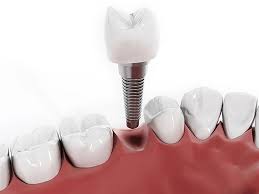A common concern among patients is: How do I know if my dental implant is infected? A dental implant infection can be serious if not addressed quickly. It typically occurs when bacteria infiltrate the tissues surrounding the Dental Implant Infection in Dubai, causing inflammation and damage to the gums or bone. This condition, known as peri-implantitis, may develop soon after surgery or even years later, and recognizing the early signs can help save the implant and prevent further complications.
Warning Signs You Shouldn’t Ignore:
It’s important to recognize the symptoms of a potential dental implant infection early. Ignoring the warning signs may lead to implant failure and even bone loss. Look for these common indicators:
- Red or swollen gums near the implant
- Bleeding when brushing, flossing, or touching the area
- Throbbing pain or discomfort around the implant
- Pus or fluid discharge from the gum line
- Persistent bad taste or odor in your mouth
- Implant feels loose or doesn’t seem stable
Even if you notice mild irritation or occasional discomfort, it’s best to have your dentist examine the site to rule out infection.
Visual and Sensory Clues Around the Implant Site:
Visually inspecting your dental implant area can help determine if something is wrong. A healthy implant site should appear pink and firm, with no visible swelling or bleeding. Signs that may indicate infection include:
- Dark red or purple gums surrounding the implant
- Gum recession, revealing more of the implant post
- White or yellow buildup, which may signal pus or plaque
- Tenderness when touching or brushing near the site
- Sudden changes in how your implant looks or feels
These clues often appear alongside physical symptoms such as a dull ache or a sharp, stabbing pain near the implant.
When Symptoms Point to Peri-Implantitis?
The medical term for a dental implant infection is peri-implantitis. This is a progressive condition that affects the bone and gum supporting the implant. If you experience the following symptoms, your infection may be more advanced:
- Bone loss visible in X-rays or scans
- Deep gum pockets developing around the implant
- Significant bleeding during probing or cleaning
- Receding gum line, exposing the metal post
- Difficulty chewing or applying pressure to the implant
These symptoms mean the infection has spread deeper into the supporting structures, and immediate professional care is necessary.
Diagnosis by a Dental Professional:
Only a dentist can accurately diagnose whether your dental implant is infected. During your exam, they will perform several steps to confirm the issue:
- Conduct a clinical evaluation of your gums and implant
- Use dental X-rays to assess bone structure and loss
- Check for mobility of the implant fixture
- Measure probing depth around the implant site
- Take note of any bleeding or pus discharge
Based on the findings, your dentist may recommend non-surgical or surgical treatment to control the infection and preserve the implant if possible.
What to Do If You Suspect an Infection?
If you suspect your Dental Implant Infection is infected, do not wait for the symptoms to worsen. Taking immediate action can prevent permanent damage. Here’s what you should do:
- Call your dentist right away for an evaluation
- Avoid applying pressure or chewing on the implant
- Rinse with warm saltwater to ease inflammation
- Use a soft toothbrush to gently clean the area
- Follow your dentist’s instructions if antibiotics are prescribed
- Keep up with regular dental visits for monitoring and maintenance
By taking quick steps, you can protect your dental implant and improve the chances of full recovery. Staying proactive with your oral health will always be your best defense against infection.





Comments